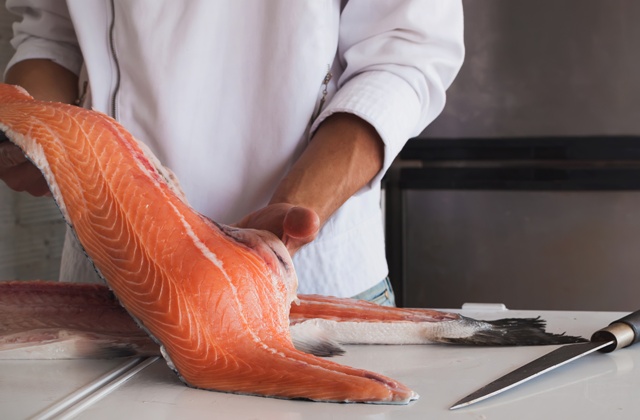Have you ever found yourself staring blankly at a restaurant menu, unable to decide? If you’re at a loss on what dish to opt for, know that you’re not alone. With so many different options, choosing just one dish can take a lot of work.
However, when it comes to seafood, there are some factors you need to consider before making your selection. Remember that this food is often delicate and requires precise cooking preparation, so it would be best to familiarize yourself with each seafood before placing your order.

That said, here are five things you should know before ordering seafood in restaurants:
1. Know What’s In Season
To enjoy some delicious seafood, knowing what’s in season is essential. After all, you want to ensure your meal is satisfying. Furthermore, out-of-season seafood can be incredibly expensive. It’s worth noting that when seafood is in season, there’s an abundance of it; thus, prices tend to be lower.
In addition, the seafood is of superior quality since they were caught more recently. So, how do you know what’s in season? One way is to ask the waiter or waitress at your preferred seafood restaurant. They should be able to tell you what’s available and fresh. You can also do a quick online search or consult a seasonal chart.
2. Consider Your Preparation Preferences
If you’re planning on ordering seafood at a restaurant, it’s crucial to consider your preparation preferences beforehand. Otherwise, you might end up with a dish you’re not happy with. If you like your seafood cooked all through, you’ll want to look for grilled, baked, or sautéed meals in the menu. These cooking methods will ensure that your fish is nice and moist inside without being overcooked.
On the other hand, if you prefer your fish rare or medium rare, then you’ll want to look for menu choices that are seared or pan-fried. These cooking preparations will give you a little char on the outside while keeping the inside nice and pink. Moreover, if you’re a fan of raw seafood, then you’ll want to look for restaurants that serve sushi or ceviche.
3. Watch Out For Allergies
Despite its widespread availability on restaurant menus, seafood is a common allergen. Small amounts of fish or shellfish might trigger an allergic reaction in people sensitive to seafood. Mild symptoms include irritation around the eyes and a runny nose, while severe symptoms can cause trouble breathing and swelling. In some cases, anaphylaxis, a life-threatening reaction, can occur.
If you have a seafood allergy, you must be aware of the potential risks before ordering in a restaurant. Talk to your waiter or waitress about your allergy and ask about the ingredients in each dish. Some restaurants may be able to accommodate your allergy by making substitutes or avoiding cross-contamination.
However, other restaurants may not be able to take the necessary precautions. Therefore, it’s always best to play it safe and choose another restaurant if you’re unsure about the quality of the seafood and the safety of the meal preparation.
4. Check For Sustainability
You might not think twice about ordering seafood when you’re out at a restaurant. However, it’s possible that the seafood you’re eating may come from a non-sustainable source. Overfishing has a destructive effect on marine life and is a significant concern in many regions worldwide. Consequently, it’s essential to ensure that the seafood you order is caught sustainably.
You can tell if a seafood dish is sustainable by looking for certain elements. It’s important to first verify that the restaurant is a certified Marine Stewardship Council (MSC) member. This organization promotes sustainable fishing practices and only certifies seafood that meets its high standards.
Then, ask the waiter or chef where the seafood was sourced from. This should raise red flags if they can’t provide you with this information. Finally, research popular seafood dishes to see which ones are most likely sustainable.
5. Consider The Portion Size Of Orders
The next time you’re out at a seafood restaurant, take a moment to consider the portion size of your order. A standard serving of fish is typically around 3 ounces or about the size of a deck of cards. However, many restaurants tend to serve much larger portions.
It’s not uncommon to see entrées weighing 8 ounces or more. While there’s nothing wrong with enjoying a hearty meal, it’s essential to be mindful of the calories and cholesterol that come with more significant portions.
If you’re trying to eat a heart-healthy diet, ordering a smaller portion or sharing your fish or shellfish order with others can make a big difference. Therefore, the next time you’re craving seafood, remember to consider the portion size before placing your order.
Takeaway
When you’re ordering seafood at a restaurant, it’s essential to do your research. Start with the menu and see their menu design. If they have put enough thought into creating a good menu design, you can expect the same thought going into making the dishes. Ensure you know what cooking methods are used and whether or not the seafood is sustainable. Always watch out for allergies and be mindful of portion sizes when ordering. By following this guide mentioned above, you’ll be guaranteed to enjoy a delicious and healthy meal without any regrets.